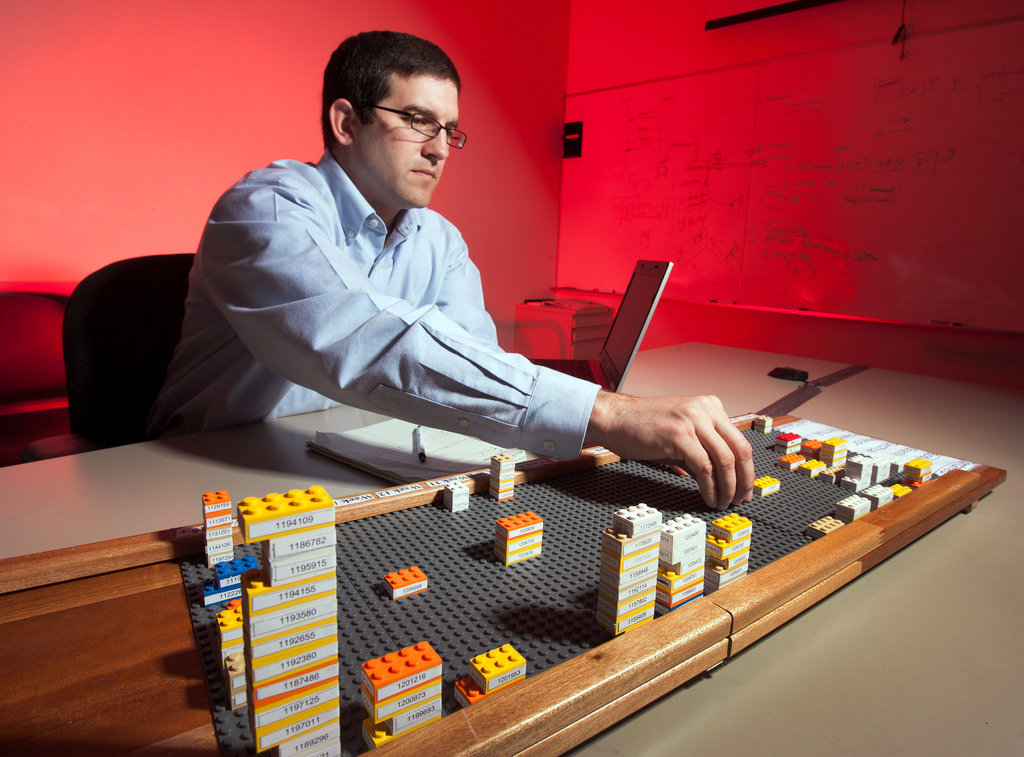GM, WellStar Develop LEGO-Based Visual Management Tool
 General Motors and WellStar Health System, a five hospital not-for-profit health system based in Marietta, GA, created a three-dimensional visualization system using LEGO building blocks to track step-by-step progress on everything from vehicle repairs to patient care.
General Motors and WellStar Health System, a five hospital not-for-profit health system based in Marietta, GA, created a three-dimensional visualization system using LEGO building blocks to track step-by-step progress on everything from vehicle repairs to patient care.
GM and WellStar created the system to be more organized and efficient and share what they learned. The ultimate goal is happier customers – whether car owners or hospital patients.
At GM, the process could reduce by thirty-three percent the time needed to implement a change that would prevent future warranty repairs. "The automotive and healthcare industries may be different, but we face similar challenges," said Tim Herrick, GM Global Vehicle Chief Engineer for Trucks, Vans, and Crossovers. "If a customer visits a dealership service department they expect their car to run better afterward, much like a sick or injured person expects to feel better after going to the hospital. 3-D Visualization helps manage both processes more efficiently."
3-D Visualization builds on GM’s Problem Resolution Tracking System. If a transmission case breaks on a durability test vehicle, a problem resolution report documents the problem, and its corresponding LEGO block goes on a LEGO board. The block color identifies the area on the vehicle and the block size denotes severity; the bigger the block, the bigger the problem. Each block has an identification number and date of discovery, and the board shows its progress from root cause to solution to outcome. 3-D Visualization is applicable to any process that has volume and aging.
"3-D Visualization allows us to look at issues more holistically," said Jamie Pickett, GM Senior Manager of Current Program Quality. "By visually representing a problem it is easier to see the whole scope of it and where the opportunities lie. And, unlike a line of data in a spread sheet, seeing a problem as a block on a board is a strong motivator for finding a solution to get it off the board." In addition to warranty repair tracking, GM is deploying 3-D Visualization globally to track vehicle program engineering changes and program budgets. GM also has developed a digital version that is easily shared globally.
WellStar is using 3-D LEGO boards to improve on-time starts in a doctor’s office, manage the Foundation’s five-year fund development program, improve Quality of Care Measures, and one board has projected a $1 million per year cost savings by improving the process for credentialing its physicians with payers. "By partnering with GM on this innovative process, WellStar is proving that a healthcare system can be operated efficiently, and now others in our industry are learning from our example," said Reynold J. Jennings, President and CEO of WellStar Health System. "This process has the potential to be an invaluable tool for a wide variety of industries and organizations."
The collaboration between the two companies began when GM’s crossover team invited WellStar representatives to give a presentation about triage practices in the Emergency Department as part of a GM leadership mentoring program. Later, GM donated a simulated assembly line to WellStar’s Development Center for doctors and nurses to learn how to apply Lean methodologies across all of their healthcare practices.
The 3-D Visualization process resulted from a brainstorm between Herrick and Dennis Pastor, WellStar’s Executive Director of Performance Excellence. A prototype was built within a week. Prior to joining WellStar, Pastor worked at GM in manufacturing and quality roles, including production superintendent for general assembly at the assembly plant in Lordstown, OH, currently the U.S. home for the Chevrolet Cruze compact sedan. "Discovering 3-D Visualization’s usefulness has been transformational for WellStar, and a significant catalyst for pro-active improvement," Pastor said. "GM’s global manufacturing operation is definitely the finest Lean system in the world. The success of this Lean process in both the automotive and healthcare industries is evidence of that credibility."
 General Motors and WellStar Health System, a five hospital not-for-profit health system based in Marietta, GA, created a three-dimensional visualization system using LEGO building blocks to track step-by-step progress on everything from vehicle repairs to patient care.
General Motors and WellStar Health System, a five hospital not-for-profit health system based in Marietta, GA, created a three-dimensional visualization system using LEGO building blocks to track step-by-step progress on everything from vehicle repairs to patient care.